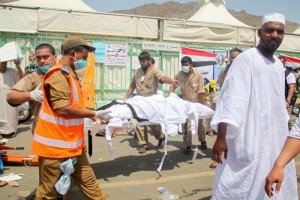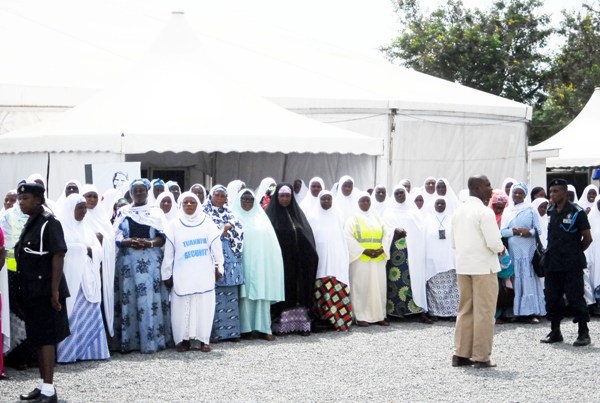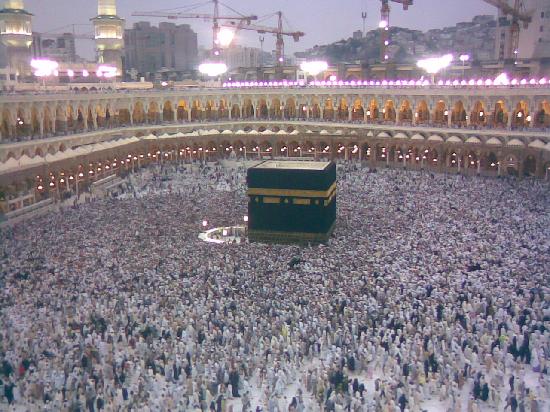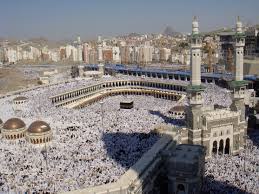 A huge stampede has killed at least 700 people and injured hundreds more at the annual Hajj in Saudi Arabia, in the pilgrimage’s worst tragedy in a quarter of a century.
A huge stampede has killed at least 700 people and injured hundreds more at the annual Hajj in Saudi Arabia, in the pilgrimage’s worst tragedy in a quarter of a century.
The stampede, the second deadly accident to hit the pilgrims this month following a crane collapse in Mecca, broke out during the symbolic stoning of the devil ritual, the Saudi civil defence service said.
The service said it was still counting the dead, who included pilgrims from different countries, and that at least 863 people had also been hurt.
Nearly two million people from across the globe were in Saudi Arabia for the Hajj, one of the largest annual gatherings in the world.
Iran said at least 43 of its citizens were dead and accused Saudi Arabia of safety errors that caused the accident.
A DFAT spokesperson said no Australians had been affected at this stage.
“The Australian Embassy in Riyadh is in close contact with Saudi authorities who have advised that at this stage no Australians have been affected by this tragedy,” the spokesperson said.
The stampede began at around 9:00am local time, shortly after the civil defence service said on Twitter it was dealing with a “crowding” incident in Mina, about five kilometres from Mecca.
Hundreds of thousands of pilgrims had converged on Mina to throw pebbles at one of three walls representing Satan, for the last major ritual of the Hajj which officially ends on Sunday.
A hospital official said the incident happened outside the Jamarat Bridge structure, where the stoning takes place. A group of pilgrims leaving the area collided with another group that was either moving in the opposite direction or camped outside, the official said.
Bodies were laid out on the ground, covered in white sheets and surrounded by personal belongings including shoes and umbrellas used by pilgrims to shield themselves from the sun.
Worst incident since 1990
Helicopters were flying overhead and ambulances were rushing the wounded to hospital, reporters at the scene said.
At one hospital, a steady stream of ambulances was arriving, discharging pilgrims carried inside on stretchers.
The official Saudi Press Agency said more than 220 rescue vehicles had responded. Emergency teams were “working to ease the human congestion and give pilgrims access to alternative routes”, it said.
The incident came as the world’s 1.5 billion Muslims marked Eid al-Adha, the Feast of Sacrifice, the most important holiday of the Islamic calendar.
It was the second major accident this year for Hajj pilgrims, after a construction crane collapsed on September 11 at Mecca’s Grand Mosque, Islam’s holiest site, killing 109 people including many foreigners.
The Hajj is among the five pillars of Islam and every capable Muslim must perform it at least once in a lifetime.
For years the pilgrimage was marred by stampedes and fires, but it had been largely incident-free for nearly a decade following safety improvements.
In the last major incident in January 2006, 364 pilgrims were killed in a stampede during the stoning ritual in Mina.
In 1990 a huge stampede in a tunnel at Mina after a failure in its ventilation system killed 1,426 pilgrims, mainly from Asia.
Thursday’s tragedy occurred outside the five-storey Jamarat Bridge, which was erected in the last decade at a cost of more than $1 billion and intended to improve safety during the pilgrimage.
Almost one kilometre long, it resembles a parking garage and allows 300,000 pilgrims an hour to carry out the ritual.
Saudi Arabia accused of safety errors
Official figures released Thursday said 1,952,817 pilgrims had performed this year’s Hajj, including almost 1.4 million foreigners.
Foreign embassies were working to identify and assist their citizens caught up in the stampede.
At least 43 Iranians were among the several hundred pilgrims killed, an official in Tehran said.
Iran said authorities at the Hajj had closed off two paths near where the accident later took place.
“This caused this tragic incident,” the head of Iran’s Hajj organisation, Said Ohadi, told Iranian state television.
“Today’s incident shows mismanagement and lack of serious attention to the safety of pilgrims. There is no other explanation. The Saudi officials should be held accountable.”
The faithful had gathered until dawn Thursday at nearby Muzdalifah where they chose their pebbles and stored them in empty water bottles.
They had spent a day of prayer Wednesday on a vast Saudi plain and Mount Arafat, a rocky hill about 10 kilometres from Mina, for the peak of the Hajj pilgrimage.
The ritual emulates the Prophet Abraham, who is said to have stoned the devil at three locations when he tried to dissuade Abraham from God’s order to sacrifice his son Ishmael.
At the last moment, God spares the boy, sending a sheep to be sacrificed in his place.
The world’s Muslims commemorated Abraham’s willingness to sacrifice his son by slaughtering cows, sheep and other animals.
Celebrations of Eid al-Adha were also marred in neighbouring Yemen, where a suicide bomber struck a mosque in the capital Sanaa in an attack targeting Shiite worshippers that killed at least 25 people and wounded dozens during prayers.
The attack was claimed by the Islamic State jihadist group, which has carried out a string of bombings in recent months targeting Shiites.





